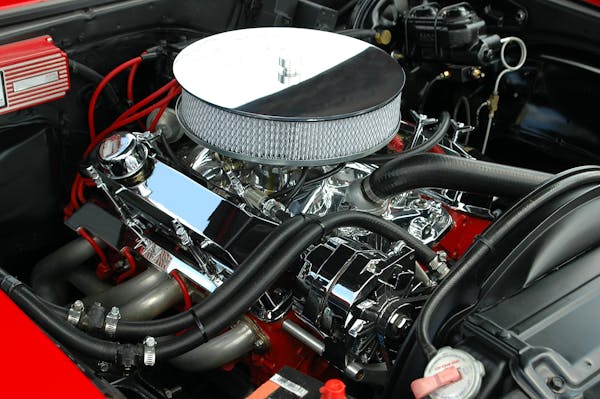The battery is responsible for starting the engine, and also provides power to electrical accessories like the radio. It is important to keep it clean to prolong its life.
The battery transforms chemical energy into electric current by a series of chemical reactions. It has rows of cells, with lead dioxide and lead plates separated by a plastic or woven sheet. For more information, check out Automotive Batteries now!
The battery is responsible for starting the engine
When you turn on your car, a battery supplies the electric current that ignites the engine. It also provides power to many other electrical components, from the horn and lights to the climate control and infotainment systems. Modern batteries are designed to absorb voltage spikes, which can otherwise damage your vehicle’s electronics and cause the car to fail to start.

In a traditional lead-acid car battery, each cell contains a sponge lead plate covered with an active material and immersed in a solution of one-third sulfuric acid and two-thirds water. When you start the engine, the electrolyte reacts with the active material on the plates to discharge and recharge the battery. This cycle repeats thousands of times. Over time, these reactions will wear out the plates, reducing the battery’s cold cranking amps (CCA) and life expectancy.
Modern “low-maintenance” batteries use a different alloy for the plate elements, which reduces the amount of water decomposed during charging. They also eliminate the individual filler caps that allowed water to be added.
It regulates the developing voltage
The battery is a power storage component that converts chemical energy into electrical current. It is often used to start a vehicle and to provide power for other applications such as the glow plugs, spark plugs, and lights. It regulates the developing voltage and keeps the electric current stable to ensure that your car can start and run properly.
A lead-acid battery consists of a set of plates, each with a negative electrode made of lead dioxide and a positive electrode made of lead (Pb). The cells are immersed in sulfuric acid, triggering a chemical reaction that produces ions that move back and forth between the two electrodes. The ions then move through a plastic separator bag that allows the electrolyte and ions to pass through while keeping sludge buildup from bridging the plates.
Gaston Plante was the first to create a battery that could be recharged by reversing the natural chemical reaction. His design led to the modern car battery. Modern batteries are made from a variety of different chemistries. Some are lighter, some deliver more power for a longer period, and some are more expensive.
It protects the car from overheating
A car battery can get extremely hot in summer. This heat can cause the liquid catalyst-electrolyte to evaporate, which can corrode the lead plates and damage the internal structure. It can also accelerate the chemical reactions, causing a rapid discharge and shortening the life of the battery.
Car batteries can deliver large amounts of electric current, which is needed to start the engine and other electrical components in the vehicle. They are also used to keep the electric current stable during operation and to provide a backup power source.
Fortunately, there are ways to prevent the negative effects of extreme heat on your car battery. Ensure that the battery is fully charged, and reduce the strain on it by limiting the use of power-hungry accessories. It is a good idea to regularly inspect the battery and charger, and replace them when necessary. A well-maintained battery will last longer and reduce the likelihood of unexpected breakdowns.
It provides power to the alternator
Car batteries and alternators work in tandem to ensure a steady supply of electricity. The battery provides the initial power to start the engine, while the alternator takes over during operation, charging and providing electricity for car accessories like lights and wipers. This seamless collaboration helps ensure a smooth and comfortable driving experience on long road trips.

The battery stores chemical energy in the form of lead plates and sulfuric acid, converting it to electrical energy for starting your engine and supporting the car’s accessories when the engine is not running. The battery also serves as a safety reserve, providing a surge of power when needed to run car lights or other electronic equipment.
The ions in the battery are separated by heavy plates and held together by a solution of water and sulfuric acid, which acts as an electrolyte. The ions are charged and discharged through the battery’s electrodes, creating a current that produces power. During these cycles, the battery loses some of its capacity over time. This is known as deep discharging and is responsible for a large portion of battery failures.